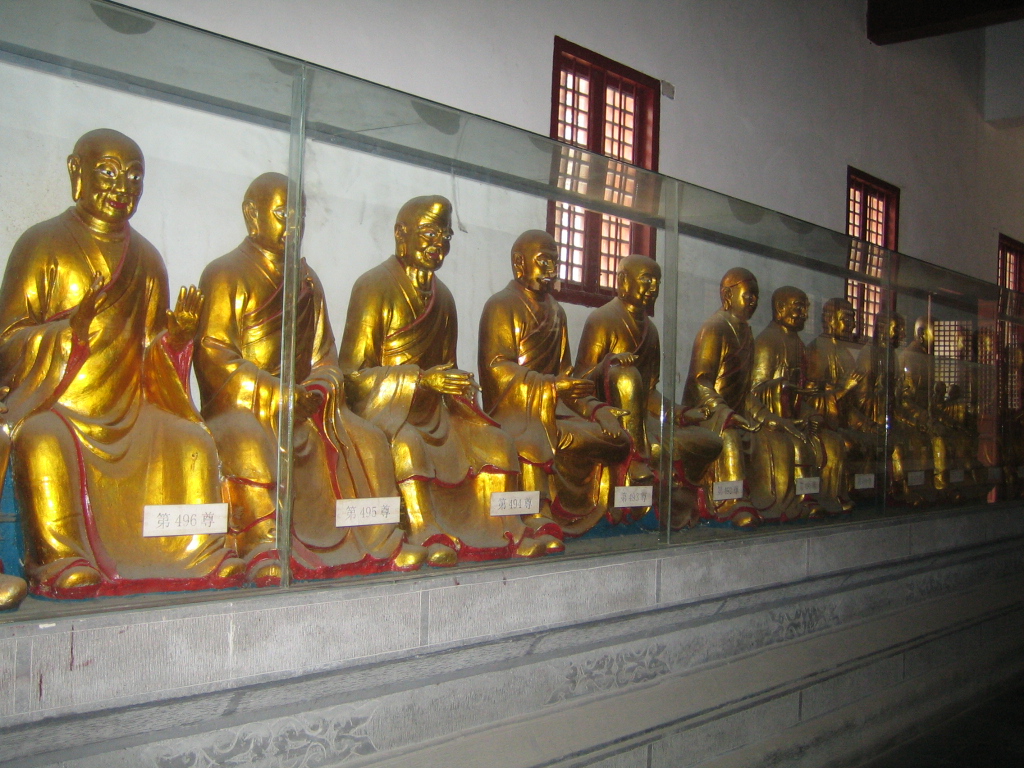Yuquan Temple (Dangyang) on:
[Wikipedia]
[Google]
[Amazon]
 Yuquan Temple () is a
Yuquan Temple () is a 净公长老当阳玉泉寺退位,宽祥法师荣膺方丈
/ref>
 Yuquan Temple () is a
Yuquan Temple () is a Buddhist
Buddhism ( , ), also known as Buddha Dharma and Dharmavinaya (), is an Indian religion or philosophical tradition based on teachings attributed to the Buddha. It originated in northern India as a -movement in the 5th century BCE, and ...
temple in Dangyang
Dangyang () is a city in western Hubei province, People's Republic of China, lying east of the Gezhouba Dam on the Yangtze River. During the Western Han Dynasty (206-24 BC). Emperor Jing of Han established an administration in Dangyang on an ar ...
, Hubei
Hubei (; ; alternately Hupeh) is a landlocked province of the People's Republic of China, and is part of the Central China region. The name of the province means "north of the lake", referring to its position north of Dongting Lake. The prov ...
, China
China, officially the People's Republic of China (PRC), is a country in East Asia. It is the world's most populous country, with a population exceeding 1.4 billion, slightly ahead of India. China spans the equivalent of five time zones and ...
, first built in 593 during the Sui dynasty
The Sui dynasty (, ) was a short-lived imperial dynasty of China that lasted from 581 to 618. The Sui unified the Northern and Southern dynasties, thus ending the long period of division following the fall of the Western Jin dynasty, and layi ...
. Zhiyi
Zhiyi (; 538–597 CE) also Chen De'an (陳德安), is the fourth patriarch of the Tiantai tradition of Buddhism in China. His standard title was Śramaṇa Zhiyi (沙門智顗), linking him to the broad tradition of Indian asceticism. Zhiyi i ...
sponsored the construction, and the name Yuquan was given by prince Yang Guang
Emperor Yang of Sui (隋煬帝, 569 – 11 April 618), personal name Yang Guang (), alternative name Ying (), Xianbei name Amo (), also known as Emperor Ming of Sui () during the brief reign of his grandson Yang Tong, was the second emperor of ...
(the future emperor).
It is now one of China's Major Historical and Cultural Site Protected at the National Level
A Major Historical and Cultural Site Protected at the National LevelEnglish translation for "全国重点文物保护单位" varies, it includes Major Site (to Be) Protected for Its Historical and Cultural Value at the National Level, Major Histo ...
and National Key Buddhist Temples in Han Chinese Area
National Key Buddhist Temples in Han Chinese Area are national key ("important") Buddhist temples in areas traditionally associated with the Han Chinese in the People's Republic of China (excluding Inner Mongolia, Tibet, and Xinjiang). The list was ...
. However, lack of maintenance over the millennium, termite infestation and various vandalism especially during the Cultural Revolution
The Cultural Revolution, formally known as the Great Proletarian Cultural Revolution, was a sociopolitical movement in the People's Republic of China (PRC) launched by Mao Zedong in 1966, and lasting until his death in 1976. Its stated goal ...
(1966–76) all contributed to the dilapidation of the temple before 2003. In 2003, after receiving a large donation from Hong Kong businessman Yeung Chun Fan and others, and with the approval of State Administration of Cultural Heritage
The National Administration of Cultural Heritage (NCHA; ) is an administrative agency subordinate to the Ministry of Culture and Tourism of the People's Republic of China. It is responsible for the development and management of museums as well a ...
, the temple went through a rebuilding that finished in 2008./ref>
References
Buddhist temples in Hubei Tourist attractions in Hubei Dangyang {{Hubei-geo-stub